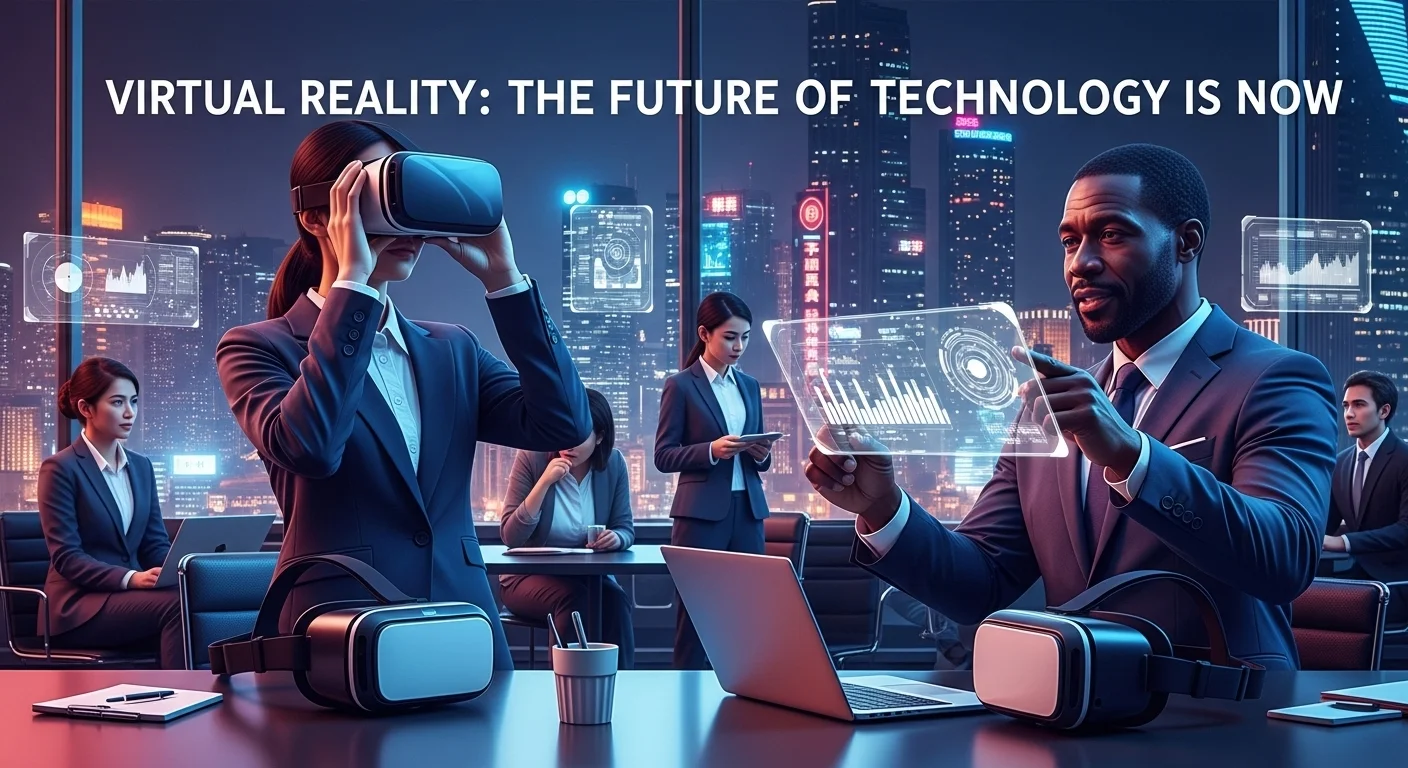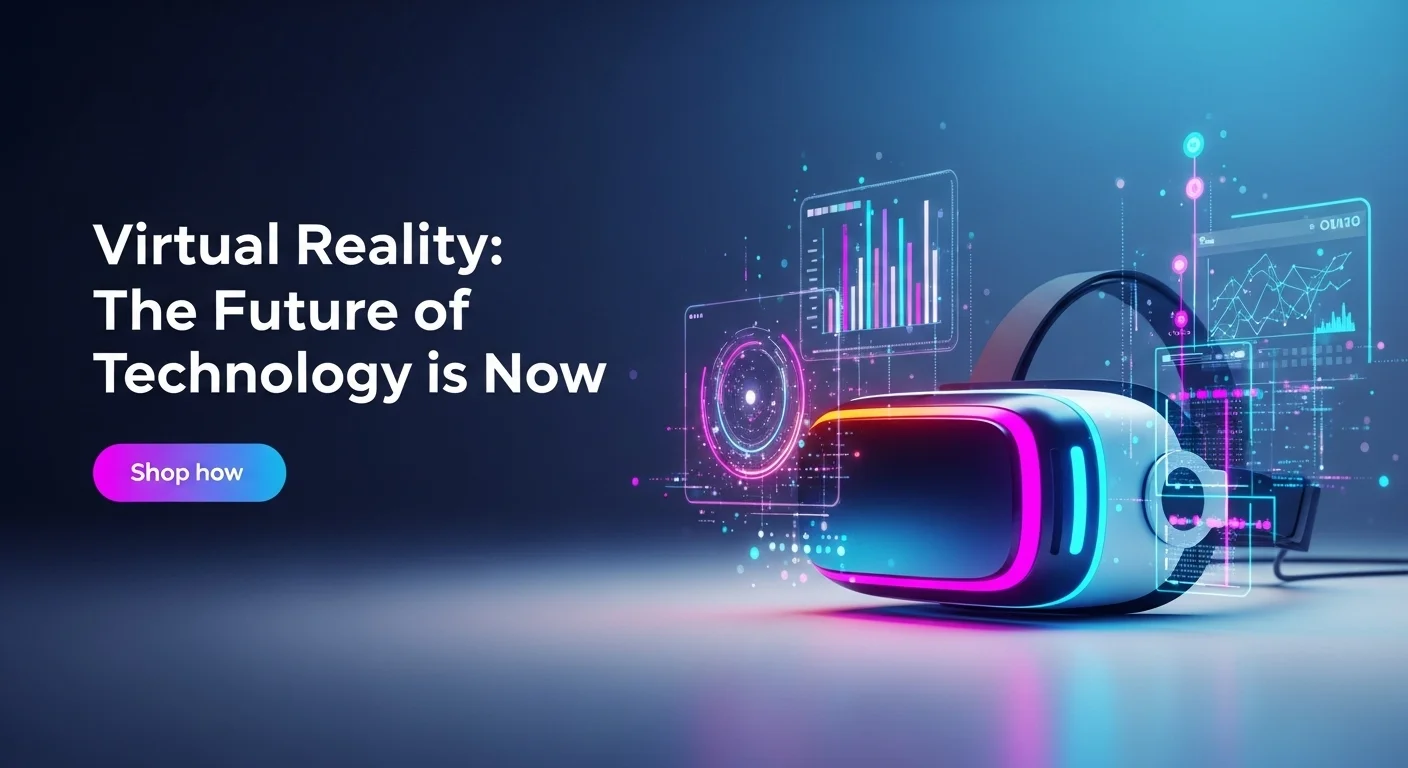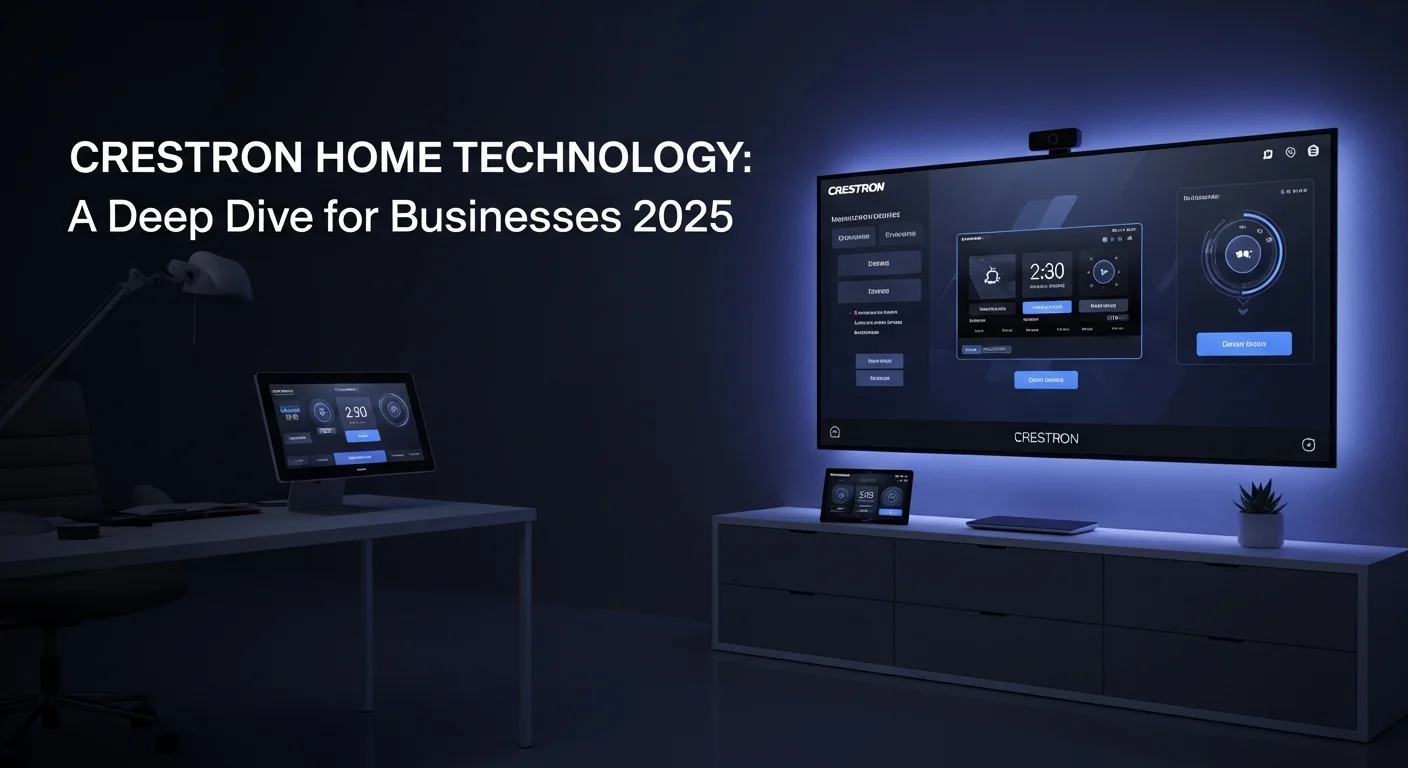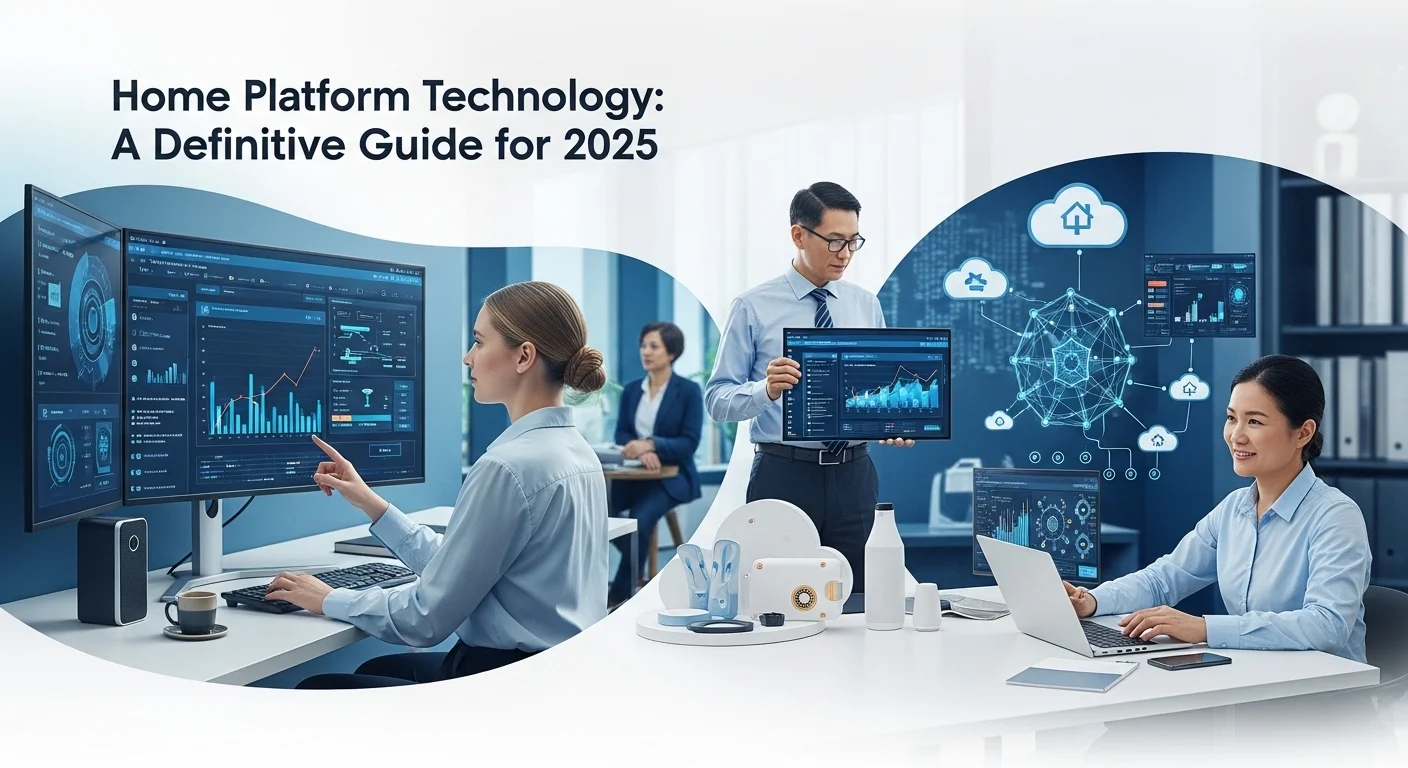Virtual Reality Explained: A Human's Guide to Our Digital Future

Executive Summary
The first time I slipped on a VR headset, it wasn't just a screen in front of my eyes; I was *there*. That feeling of presence is what makes Virtual Reality a game-changer, not just for gaming, but for everything from business training to product design. In this article, I'll break down the magic behind VR in simple terms. We'll look at the hardware that makes it possible, how businesses are using it to innovate and save money, and what you, as a tech enthusiast or professional, need to know to get started. Forget the jargon—this is your practical guide to understanding and using the next wave of digital interaction.
Table of Contents
Table of Contents
- What is Virtual Reality and Why Should You Care?
- Why VR is a Game-Changer in Technology
- Real-World Business Benefits of Virtual Reality
What is Virtual Reality and Why Should You Care?
Virtual Reality (VR) represents one of the biggest leaps in how we interact with technology. In simple terms, virtual reality is a computer-generated world that you can step inside and explore. You're not just looking at a screen; you become part of this new environment, able to look around, move, and interact with things as if you were really there. This deep sense of 'presence' is what makes VR so powerful and different from anything we've had before. To get this experience, you wear a VR headset, which blocks out the physical world and shows your eyes a 3D image, tricking your brain into believing it's somewhere else. For years, I've seen this tech evolve, and its importance goes way beyond video games; it's fundamentally changing how we work, learn, and connect.
Before we go further, it's helpful to know how VR differs from its cousins, Augmented Reality (AR) and Mixed Reality (MR). VR puts you in a completely new, digital world. AR, on the other hand, adds digital elements to your real world—think of the heads-up display in a car or that Pokémon that appeared on your sidewalk. MR takes it a step further, letting digital objects interact with your real surroundings. VR is all about total immersion, taking you to another place entirely. This is made possible by some clever hardware. The main piece of gear is the VR headset, sometimes called VR goggles, which houses screens and lenses to create the 3D world. Crucially, it also has sensors that track your head movements. When you turn your head, your view in the virtual world changes instantly and smoothly. This is the secret sauce that makes the experience feel so natural and believable.
Why VR is a Game-Changer in Technology
The impact of VR on technology is about much more than just entertainment. It's a massive shift in how we interact with computers. For decades, we've been limited to flat screens and keyboards. VR breaks out of that box, letting us interact with data and applications in a 3D space. I've seen the 'aha!' moment on people's faces when they experience this, and it has profound implications:
- Seeing Data Differently: Imagine walking through a 3D model of a building before it's built, or a scientist grabbing and turning a complex molecule to understand its structure. I've worked with financial analysts who navigate market trends as a 3D landscape. This spatial understanding can spark insights you'd never get from a spreadsheet.
- Training Without Risk: VR provides the ultimate safe space for practice. I've seen surgeons rehearse complex operations on virtual patients and pilots simulate emergency landings, all without any real-world consequences. The hands-on, multi-sensory nature of VR training helps people learn faster and retain information longer. A PwC study even found that employees trained in VR were four times faster to train than in a traditional classroom.
- Designing the Future: Car manufacturers and architects are using VR to build and test their creations virtually. Teams can collaborate in a shared space, walking around a full-scale digital prototype of a car or engine. This lets them spot flaws and make changes quickly and cheaply, long before building anything physical.
- Connecting Remote Teams: With so many of us working remotely, VR offers a way to feel truly present with colleagues. Instead of another flat video call, teams can meet in a virtual room, brainstorm on a whiteboard, and interact with 3D designs together. It brings back a sense of connection that's often missing online.
Real-World Business Benefits of Virtual Reality
Businesses are catching on fast, realizing that VR can deliver a real return on investment. Creating an immersive, memorable experience is a powerful tool. The first step for any company is to find the right problem to solve with VR and then pick the best VR headset for the job. For instance, a high-end, PC-connected headset might be perfect for detailed design reviews, while a standalone headset is great for rolling out training to hundreds of employees.
Here's where I've seen VR make a real difference for businesses:
- Creating Unforgettable Customer Moments: In real estate, virtual home tours allow buyers from across the globe to explore a property as if they were there. I've seen car brands create virtual showrooms where you can customize a car and even take it for a virtual spin. This deep engagement builds an emotional connection that drives sales.
- Saving Time and Money: While VR has an upfront cost, the long-term savings are often huge. VR training cuts down on travel costs, physical materials, and the need for dedicated training facilities. In manufacturing, virtual prototyping dramatically reduces the waste and expense of building physical models.
- Boosting Safety and Performance: In high-risk jobs like construction or energy, VR training is a lifesaver. It lets workers practice emergency procedures in a safe, controlled environment, which has been shown to significantly reduce workplace accidents. A safer workforce is a more productive one.
- Building a Forward-Thinking Brand: Let's be honest, using cutting-edge tech like VR makes a company look innovative. A marketing campaign using a VR headset can create a huge amount of buzz and set a brand apart from the competition. It tells the world you're at the forefront of your industry.
Your journey into VR starts with understanding its power beyond gaming. The hardware is getting better and more affordable every day. For businesses, it's no longer a question of *if* you should adopt virtual reality, but *how* and *when*. By focusing on real-world applications and choosing the right gear, you can unlock a new dimension of efficiency, connection, and innovation. The era of spatial computing is here, and we're seeing it through the lens of a VR headset.

Your Complete Guide to VR Hardware and Business Solutions
As you look to tap into the power of virtual reality, it's time to get practical. Understanding the hardware, software, and strategy is key to making VR work for you, whether you're a tech enthusiast or a business leader. This guide will walk you through the technical side of things, from picking the best VR headset to keeping your virtual world secure.
A Deep Dive into Virtual Reality Hardware
The hardware is the heart of the VR experience, and believe me, the choices can feel overwhelming at first. But the right gear depends entirely on what you want to do. Let's break down the main categories to help you choose wisely.
Types of Virtual Reality Headsets:
Standalone VR Headsets: These are the all-in-one champs. They don't need a powerful PC or console because the computer is built right in. The Meta Quest series is the most famous example, and it's what I often recommend for businesses getting started. They offer a fantastic blend of performance and convenience. Because they're wireless and easy to set up, these VR goggles are perfect for large-scale training or events where you need freedom of movement.
PC VR Headsets: These are the powerhouses. They tether to a high-end computer to create incredibly detailed and realistic virtual worlds. Headsets like the Valve Index or HTC VIVE Pro series are the top choice for tasks that demand absolute visual perfection, like complex engineering models or architectural walkthroughs. The trade-off is the higher cost and the need for a dedicated space, as some require external sensors to track your movement.
Console VR Headsets: This space is dominated by Sony's PlayStation VR (PSVR). While it's primarily built for gaming, it offers a high-quality and user-friendly VR experience that has introduced millions of people to the technology. It’s a great example of making powerful tech accessible.
Choosing the Best VR Headset: What Really Matters
When you're comparing headsets, it's easy to get lost in the specs. Here’s what I tell people to focus on, based on what you actually plan to do:
- Clarity (Resolution): This is how sharp the image looks. Higher resolution reduces the 'screen-door effect,' where you can see the lines between pixels. Modern headsets are getting so good that this is becoming less of an issue, but for detailed work, more pixels are always better.
- Smoothness (Refresh Rate): Measured in Hertz (Hz), this is how many times the screen refreshes per second. A higher rate (like 90Hz or 120Hz) makes movement feel incredibly smooth and is a huge factor in preventing motion sickness. This is a non-negotiable for me.
- Immersion (Field of View - FOV): This is how much of the virtual world you can see at once. A wider FOV feels more natural, like using your peripheral vision, and really pulls you into the experience.
- Tracking: This is how the system 'sees' you. 'Inside-out' tracking uses cameras on the headset itself, making it super portable (like on standalone headsets). 'Outside-in' tracking uses external sensors placed around your room, which can provide a rock-solid tracking area for room-scale experiences.
- Comfort: This is critical. If a headset is heavy or poorly balanced, you won't want to wear it for long. I always advise people to check reviews on weight distribution and ventilation, especially for work environments where you might be in VR for an hour or more.
- Hands (Controllers): Your controllers are your hands in the virtual world. Good controllers feel natural and allow you to point, grab, and interact intuitively. Most now offer six degrees of freedom (6DoF), meaning they track your position and orientation perfectly.
For most businesses just starting out, a standalone VR headset like the Meta Quest 3 is the perfect entry point. It's versatile and untethered. For highly specialized work that needs maximum graphical horsepower, a PC VR setup is the way to go. The exciting trend to watch is the move towards lighter, sleeker VR glasses that aim to blend virtual and augmented reality for everyday use.
VR Software, Development, and Business Integration
Great hardware is just one piece of the puzzle. The magic really happens with the software and a smart plan to bring it into your workflow.
Development Platforms and Tools:
Most VR apps you see are built using game engines like Unity or Unreal Engine. They are incredible toolkits for creating 3D worlds and programming interactions. Another key piece of the puzzle is OpenXR, a standard that lets developers build an app once and have it run on many different VR headsets, which saves a ton of time and effort.
Your Game Plan for Bringing VR to Business:
Jumping into VR requires a thoughtful approach. Here's a simple roadmap:
- Define Your Goal: Start with a clear problem. Are you trying to make safety training more effective? Speed up product design? Create a killer marketing campaign?
- Start Small: Run a pilot project first. This lets you test the waters and learn what works for your organization before you invest heavily.
- Pick Your Tools: Based on your goal, choose the right VR headset and decide if you need a custom-built app or if an existing solution will work.
- Content is Everything: The success of your VR project depends on the quality of the experience. It has to be engaging, easy to use, and actually achieve your goal.
- Plan for Scale: Think about how VR will fit into your daily operations. For large deployments, tools like Meta Quest for Business are essential for managing all the devices remotely.
- Measure Your Success: Track what matters. Did training time decrease? Did workplace accidents go down? Did sales go up? This data proves the value of your investment.
Cybersecurity in the Age of Virtual Reality
As VR becomes a bigger part of our lives, we have to talk about security. From my experience, this is something companies often overlook at first. A VR headset collects a lot of data—from where you look to how you move. It's incredibly personal and needs to be protected.
Here are the key risks to be aware of:
- Data Privacy: Hackers could target the user data collected by VR platforms, including personal info and confidential company data accessed in a virtual meeting.
- System Hijacking: A hacker could potentially take over your device, see what you see, or even manipulate your virtual environment to trick you.
- Identity Theft: The motion data from your headset and controllers is unique to you. In the wrong hands, it could be used to create a digital 'deepfake' of you to impersonate you in a virtual meeting.
- Insecure Networks: Just like with any online activity, the connection between your headset and the server needs to be secure and encrypted to prevent snooping.
To stay safe, businesses need to use strong security practices like data encryption, multi-factor authentication, and employee training. Choosing a VR ecosystem with a proven commitment to security is your first and most important line of defense. Stepping into VR is an exciting journey, and with a smart strategy that includes thoughtful planning and risk management, you can confidently embrace this new dimension of technology.

Tips and Strategies to Master Your Virtual Reality Experience
As virtual reality tech becomes more common, everyone from casual users to large companies is looking for ways to get the most out of it. The right approach can make all the difference between a clunky, frustrating experience and a truly transformative one. Whether you're firing up your first VR headset or deploying a whole fleet of them, these strategies will help you navigate the immersive world with confidence.
Best Practices for an Optimal VR Experience
A great VR experience starts before you even put the headset on. It's all about setting up for success and forming good habits.
For Individual Users and Tech Enthusiasts:
- Create a Safe Zone: Trust me on this one. VR is so immersive you can completely forget where you are in the real world. Before you start, clear your space of furniture, pets, or anything else you could trip over. I learned this hard way with a close call involving a coffee table. Use the built-in 'guardian' feature to draw a virtual boundary. It's a lifesaver.
- Beat Motion Sickness (Cybersickness): Some people feel a bit queasy in VR, especially when their virtual movement doesn't match their physical movement. To avoid this, start with experiences where you're standing still or walking around your actual room. Take frequent breaks, stay hydrated, and if you feel off, stop right away. The good news is that developers are getting much better at designing comfortable experiences.
- Keep It Clear: A smudged lens can ruin the magic. Keep the lenses on your VR goggles clean with a dry microfiber cloth (never use liquids!). Also, take a moment to adjust the interpupillary distance (IPD), which matches the lens spacing to your eyes. It makes the image sharper and reduces eye strain.
- Explore Everything: Gaming is fantastic in VR, but it's just the tip of the iceberg. Check out social VR platforms, try a VR fitness app, watch a 360-degree documentary, or get creative with 3D painting tools. The more you explore, the more you'll appreciate what this tech can do.
For Business and Enterprise Deployments:
- Onboard Your Team Properly: Don't just hand someone a headset and expect them to be a pro. I always recommend structured onboarding sessions to teach people how to use the gear and navigate the virtual world. Start with simple, fun experiences to build their confidence.
- Design for the Medium: Remember, VR isn't just a 3D movie. The best experiences are interactive. A training simulation should be hands-on. A virtual meeting space should let people communicate and collaborate naturally. It’s all about leveraging that unique sense of presence.
- Prioritize Hygiene and Management: When multiple people are using the same headsets, hygiene is non-negotiable. Use sanitizing wipes and disposable face covers. For managing a whole fleet of devices, a Mobile Device Management (MDM) system is essential for updates, app deployment, and security.
- Integrate, Don't Isolate: VR is most powerful when it's part of a larger plan. A VR training session, for example, should complement other learning methods. The data you gather from the VR experience can then be used to give feedback and track improvement.
The Future of VR: AI, the Cloud, and the Metaverse
The evolution of virtual reality is tied to other amazing technologies. What’s coming next is where things get really exciting, promising virtual worlds that are smarter, more realistic, and accessible to everyone.
- Artificial Intelligence (AI): AI is going to make virtual worlds feel truly alive. Imagine training simulations where AI-powered characters react intelligently and unpredictably, just like real people. AI will also personalize your experience, adjusting the difficulty of a task or suggesting new things to explore based on how you're doing.
- Cloud VR: Right now, high-end VR needs a powerful computer. Cloud VR will change that. The heavy lifting will be done on powerful remote servers, and the experience will be streamed to a simple, lightweight VR headset or even a pair of VR glasses. This will make top-tier VR affordable and accessible to millions more people.
- The Metaverse: You've heard the term. The metaverse is the vision of a vast, interconnected network of virtual spaces for work, play, and socializing. VR is widely seen as the key to unlocking this next version of the internet in the most immersive way. Choosing the best VR headset will be like choosing your main portal to this new digital world.
- Better, Lighter, Faster Hardware: The perfect VR headset is still on the horizon, but we're getting closer. Future devices will be lighter, with ultra-high-resolution displays, wider fields of view, and sensors that can track your facial expressions for more lifelike avatars. Haptic feedback will also get much more advanced, letting you 'feel' the virtual world.
Business Tools and Quality Resources
For businesses ready to jump in now, there's a growing ecosystem of amazing tools. Collaboration platforms like Spatial and Horizon Workrooms offer incredible virtual meeting spaces. Specialized companies like Strivr and Osso VR provide powerful training platforms for corporate development and surgical practice. For designers, tools like Gravity Sketch allow for intuitive 3D modeling right inside VR. If you want to stay on the cutting edge, one of my go-to sites is the publication Road to VR; they do a fantastic job of covering the industry without the fluff.
Ultimately, your journey with virtual reality is one of ongoing discovery. By following these best practices, you can ensure a safe and powerful experience. By keeping an eye on the future, you can prepare for the next wave of innovation. This technology, centered on an ever-improving VR headset, is not a gimmick. It's a foundational shift in how we interact with information and each other, building a more immersive and intelligent digital future.
Expert Reviews & Testimonials
Sarah Johnson, Business Owner ⭐⭐⭐⭐
This was a really solid overview! As a small business owner, I got a lot of ideas. I'd love to see a follow-up piece with more step-by-step examples for retail shops like mine. Still, very helpful!
Mike Chen, IT Consultant ⭐⭐⭐⭐
As an IT guy, I appreciated the breakdown of the different headset types and the security section. You explained complex topics like inside-out vs. outside-in tracking really clearly. Good, solid advice.
Emma Davis, Tech Expert ⭐⭐⭐⭐⭐
Absolutely fantastic article! I've been studying immersive tech, and this piece connected all the dots perfectly, from hardware specs to future trends with AI. It’s comprehensive without being dry. Bookmarking this one!



